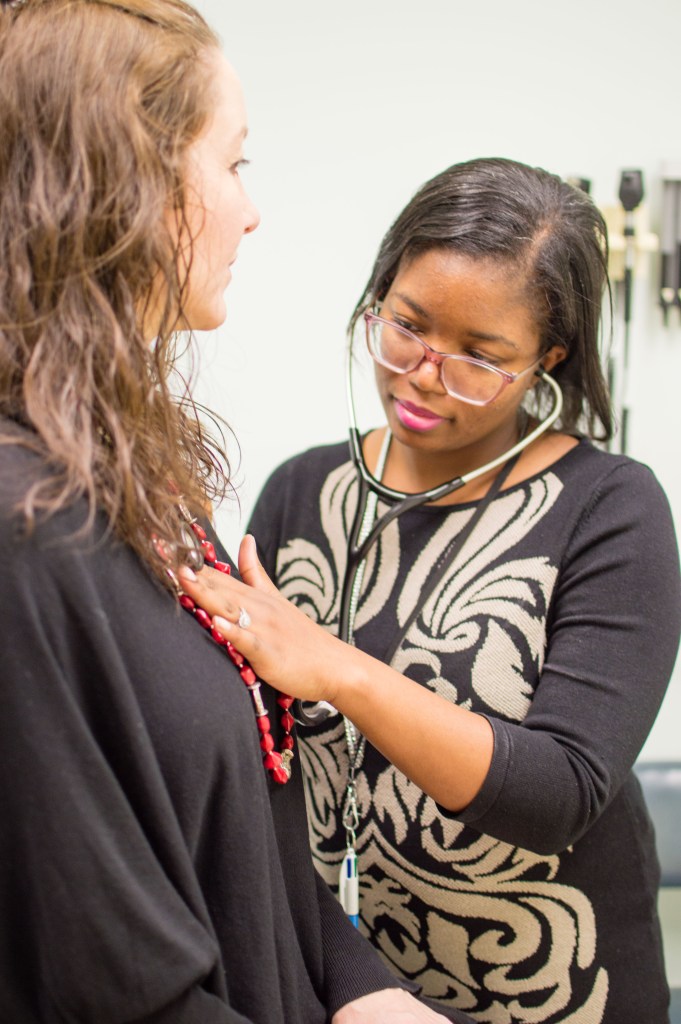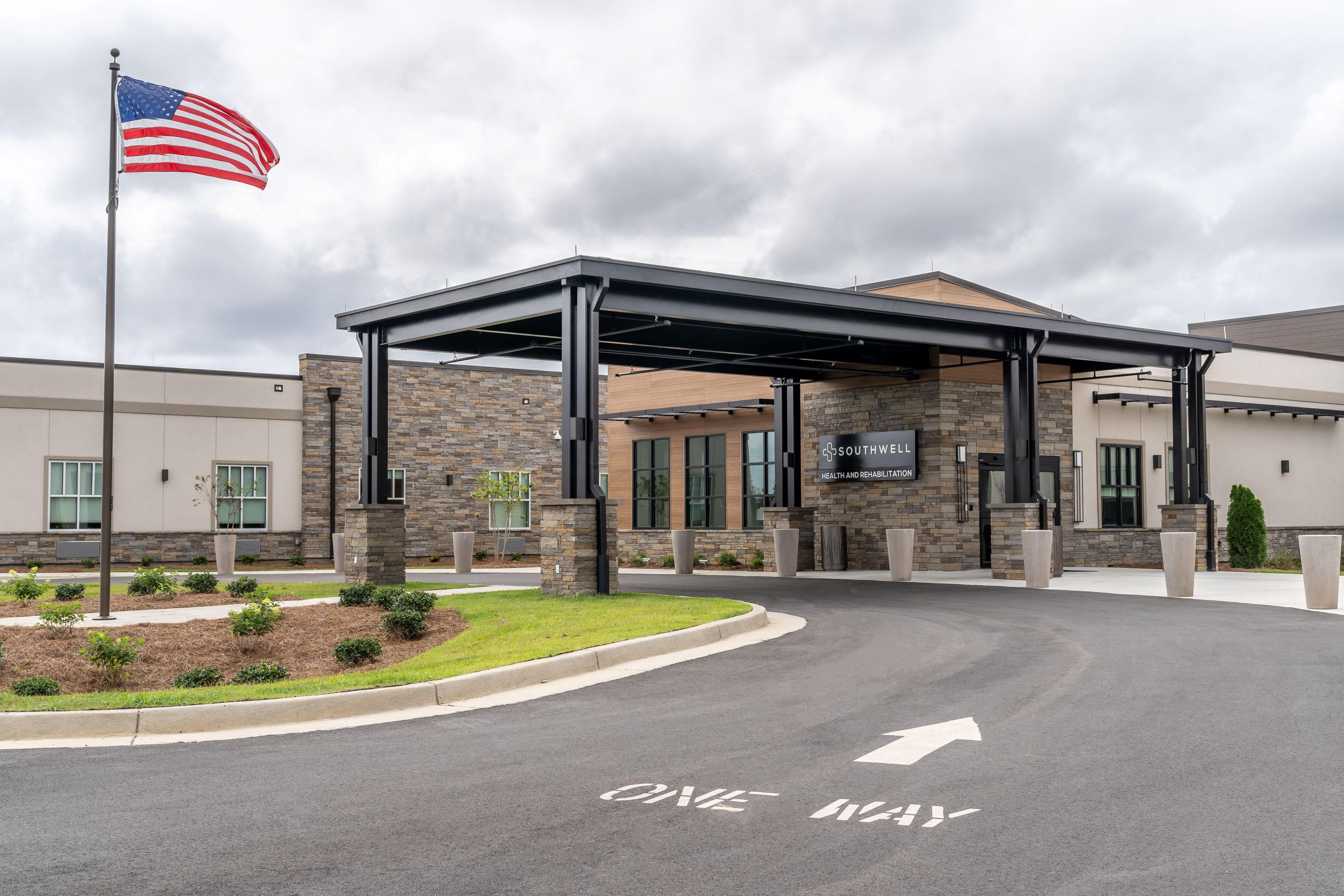Rural Hospital Tax Credits: Lawmakers push for transparency
Published 4:00 am Sunday, December 23, 2018

- Dr. Shayla Curtis checks the heartbeat of a patient at DMC Family Physicians.
ATLANTA – When the donations poured into a popular state tax credit program benefiting rural hospitals this year, nearly $19 million piled up with nowhere in particular to go.
These donors – most of them from the Atlanta area – left that decision to Georgia HEART, a consulting firm based in the Atlanta area that charges rural hospitals 3 percent of their donations for assistance managing the program.
And for the first time, all 58 of the hospitals that qualify for the program will enlist the firm’s help next year.
While South Georgia Medical Center’s main campus in Valdosta does not benefit directly from the statewide program, its Lanier and Berrien locations raised well over $1 million combined, but the haul could have been even greater.
Miller County Hospital, a rural hospital near the Alabama line that takes pride in its respiratory and dialysis services, will be among the newcomers to benefit from the program.
Robin Rau, the hospital’s chief executive officer, said the rural facility had declined Georgia HEART’s aid in the past as a way to uphold a pledge to keep every precious dollar donated at home.
But then Rau said she heard about the millions of dollars that donors gave through Georgia HEART with no specific hospital in mind. Some participating facilities raked in more than $2 million while hers raised just $27,000. She hopes to clear at least $1 million next year.
“There were tremendous missed opportunities,” Rau said. “I kind of beat myself up about it because I knew that, because I stuck to my values and what I had promised, it cost this hospital quite a bit of money.”
Georgia HEART has become so synonymous with the state’s rural hospital tax credit that many people now use the two terms interchangeably, and a quick Google search for the tax credit immediately turns up the firm. As Rau learned, not being enrolled in Georgia HEART can be confused as not being in the state program at all.
But what is particularly troubling to some state lawmakers and participants is the massive amount of undesignated donations – totaling $18.7 million – left to the firm to divvy up. Georgia HEART says it distributes the cash using a state list of hospitals ranked by financial need.
“The full intent has always been that you, as an individual, decide and tell someone where that money is supposed to go,’” said Rep. Terry England, R-Auburn, who chairs the House’s powerful budget-writing committee. “And not leave it to someone else – who is actually profiting from the transaction – to be able to decide ‘OK, I’m going to send it here or I’m going to send it there.’ You should be the one deciding that.”
England also co-chairs another influential legislative panel: the House Rural Development Council. That group has proposed increasing the amount of taxpayer funds devoted to the program, which now gives donors a dollar-for-dollar income tax credit.
Right now, $60 million is set aside each year, but lawmakers are poised to consider whether to lift the cap to $100 million.
Donors have already started submitting applications for next year, although a proposed federal rule could dampen enthusiasm this time around.
But the council will also push for changes, such as clarifying that donors or their accountants should be the ones selecting which hospital receives their money – not Georgia HEART.
The goal, England said, is for the donor to have a vested interest in a particular hospital’s success.
Other proposed legislative fixes had still not been announced as of this week, but lawmakers have said they intend to fine-tune some of the program’s rules on giving and spending while increasing transparency.
“We know where the dollars are going that we’re putting in a budget, and we should also, in this case, be able to see where those dollars are going as it is helping the hospital and how it’s being used within those hospitals, and the general public should be able to see that too,” England said.
England said the council was “just trying to add a little daylight.”
‘The ultimate goal’
The two-year-old tax credit program has been celebrated as a lifeline for the state’s fragile rural hospitals. Seven small-town hospitals have closed their doors here in the last five years, with two reopening on a smaller scale.
Expanding that aid is a key plank of incoming governor Brian Kemp’s plan for rural health care.
The program’s original author, Lt. Gov.-elect Geoff Duncan, who crafted the program as a state representative and who also wants to grow the program, will now have considerable say over which bills advance through the legislative process.
Duncan said he is open to ideas on ways to improve efficiency and transparency, but he said he favors the current flexibility given to hospitals on how they deploy the cash.
“If a community is writing checks and contributing to that hospital, and at the end of the year, they don’t feel like that hospital utilized those dollars the correct way, then they’re going to hold them accountable way better than a government program is going to be able to hold them accountable,” Duncan said.
“The community is the best watchdog, in my opinion,” he said.
As for the large amount of undesignated donations, Duncan said he wants to learn more about the issue and how some lawmakers propose to address it.
“Certainly, if somebody is giving those dollars, my hope is that they would become engaged in a specific rural community and hospital,” Duncan said. “That would be, to me, the ultimate goal here.”
Jim Kelly, the director of Georgia HEART, has stressed his firm is not choosing which hospitals benefit.
Kelly said his firm uses a state Department of Community Health list, which ranks hospitals based on financial need, when distributing the millions of dollars offered without a specific hospital in mind.
He said the money is usually allocated in increments of $10,000, going down the list and then starting over again at the top.
“Georgia HEART allocates these contributions relying exclusively on the DCH list, using no subjective or political criteria,” Kelly said in an email exchange. “In essence, Georgia HEART does not choose the (rural hospitals) to which undesignated contributions are made, as the DCH list of hospitals by financial need dictates that allocation.”
Kelly said each hospital received an average of $340,000 from these undesignated donations this year.
“If Georgia lawmakers desire for contributions to be allocated among the 58 participating hospitals in a manner they believe is more equitable, we will welcome their directive,” Kelly said.
If Georgia HEART charges the full 3 percent on the $58 million it processed this year, its fee would be about $1.7 million. Lawmakers capped the fee at 3 percent last year.
Kelly said Georgia HEART will donate its net income from the program to its parent nonprofit, the Georgia Community Foundation, which he said will dole out the funding to rural hospitals and projects benefiting rural health care.
For this year, Kelly said he expects that to be about $850,000 – or about half its fee charged this year.
SunLight Project hospitals
There’s little readily available statewide information on how each hospital fared in fundraising efforts this year, when interest in the program soared, and how they used the money.
Most of the information available ahead of the legislative session, when lawmakers are likely to consider significant changes, comes from Georgia HEART and the individual hospitals.
Most of the money went through Georgia HEART this year. Kelly said his firm processed more than 7,100 applications and contributions – most of them from individuals.
The average amount received at each hospital was about $1 million, and no hospital reached the $4 million limit, Kelly said.
Kelly said his group and the Georgia Hospital Association will soon request detailed information from participating hospitals about how the money was spent. The responses will be published in an annual report as an attempt, he said, to provide taxpayers and lawmakers with more information.
Kelly referred a request for a list of donations per hospital to the state Department of Community, which collects that information for an annual report. That report will not be available until April – when state lawmakers hit the road for home after the 2019 legislative session.
And an attempt to reach all 58 of the hospitals benefiting from the state’s tax credit program yielded a smattering of responses. About two dozen hospitals provided information, which showed some receiving as little as $27,000 and one – Colquitt Regional Medical Center in Moultrie – expecting to clear $2.3 million.
A report from the state Department of Community Health shows a somewhat fuller picture, but it is based on 2017, when only $9.2 million was donated. At the time, the tax perk was limited to 90 percent.
But the state report does show the variety of ways hospitals used the money, with some paying down debt, replacing outdated equipment or addressing basic maintenance. Others used the cash for physician recruitment or to add – or enhance – services.
All of the Georgia SunLight Project coverage areas, which include Valdosta, Thomasville, Moultrie, Tifton, Milledgeville and Dalton, have at least one participating hospital per area.
Colquitt Regional reported raising the most of all the hospitals that responded to a request for information. The facility plans to put the $2.3 million raised toward the cost of expanding its cancer center and providing uncompensated care for cancer treatment.
South Georgia Medical Center’s Lanier and Berrien campuses raised about $611,000 and $585,000, respectively.
Archbold Memorial in Thomasville received about $1.7 million. Its partner hospitals, Brooks County and Mitchell County, are each set to receive nearly $500,000 this year. Grady General is poised to take in about $1.6 million this year.
“The funds received by the Archbold system through the Georgia Rural Hospital Tax Credit program will help us offset costs we’ve absorbed by treating all patients regardless of their ability to pay,” Greg Hembree, Archbold’s chief financial officer, said in a statement.
“We receive no public funding to support hospital operations, and we had over $101.6 million in uncompensated care in 2018,” he said. “The generous contributions to the program are helping us to continue to provide the best care options to patients.”
Tift Regional in Tifton raised $1.3 million and Cook Medical raised about $746,000, which a spokeswoman said would generally be used to offset indigent and charitable care to the community.
Murray Medical Center raised $200,000 this year for continued capital improvements. Navicent Health Baldwin has raised about $1 million.
‘Piece of the pie’
Evans Memorial Hospital in Claxton raised about $770,000 this year, and it did so without a consultant’s assistance. Last year, the hospital cobbled together $623,000, which was the second highest amount raised.
Lisa Ryles, who is the hospital’s director of business development, said the rural hospital resisted the temptation to use the much-needed cash to catch up on bills that first year. Instead, the money went toward adding new revenue-generating services, such as gastroenterology.
“I think we would have been in some significant financial stress if we had not done that,” said Ryles, who credits the program with helping the hospital turn a slight profit after a string of negative years.
But even so, the southeast Georgia hospital will join the ranks of Georgia HEART next year.
Ryles said the large amount of undesignated donations coming into Georgia HEART – the $18.7 million – proved too alluring to pass up. Missing out on that “piece of the pie” seemed worse than losing 3 percent of donations, she said.
“That was our whole marketing campaign – we get to keep the money here,” Ryles said. “It’s kind of heart breaking, but we don’t have the money and resources to market in Atlanta.”
The majority of those who wrote checks for the program this year without choosing a specific hospital – or 83 percent – were from metro Atlanta, Kelly said.
But some representatives of currently participating Georgia HEART hospitals did not lament the lost 3 percent of donations. The fee, they said, seemed like a small price to pay to tap into metro Atlanta wallets.
“Without that, I would not have had access to the people who gave most of the money to this hospital,” said Jerry Pickett, the financial officer at Burke Medical Center in Waynesboro.
“Had they not been there, I would have lost out on $300,000 that cost me $9,000 to get,” Pickett said. “That’s a pretty good investment to me.”
Jill Nolin covers the Georgia Statehouse for The Valdosta Daily Times, CNHI’s newspapers and websites.





